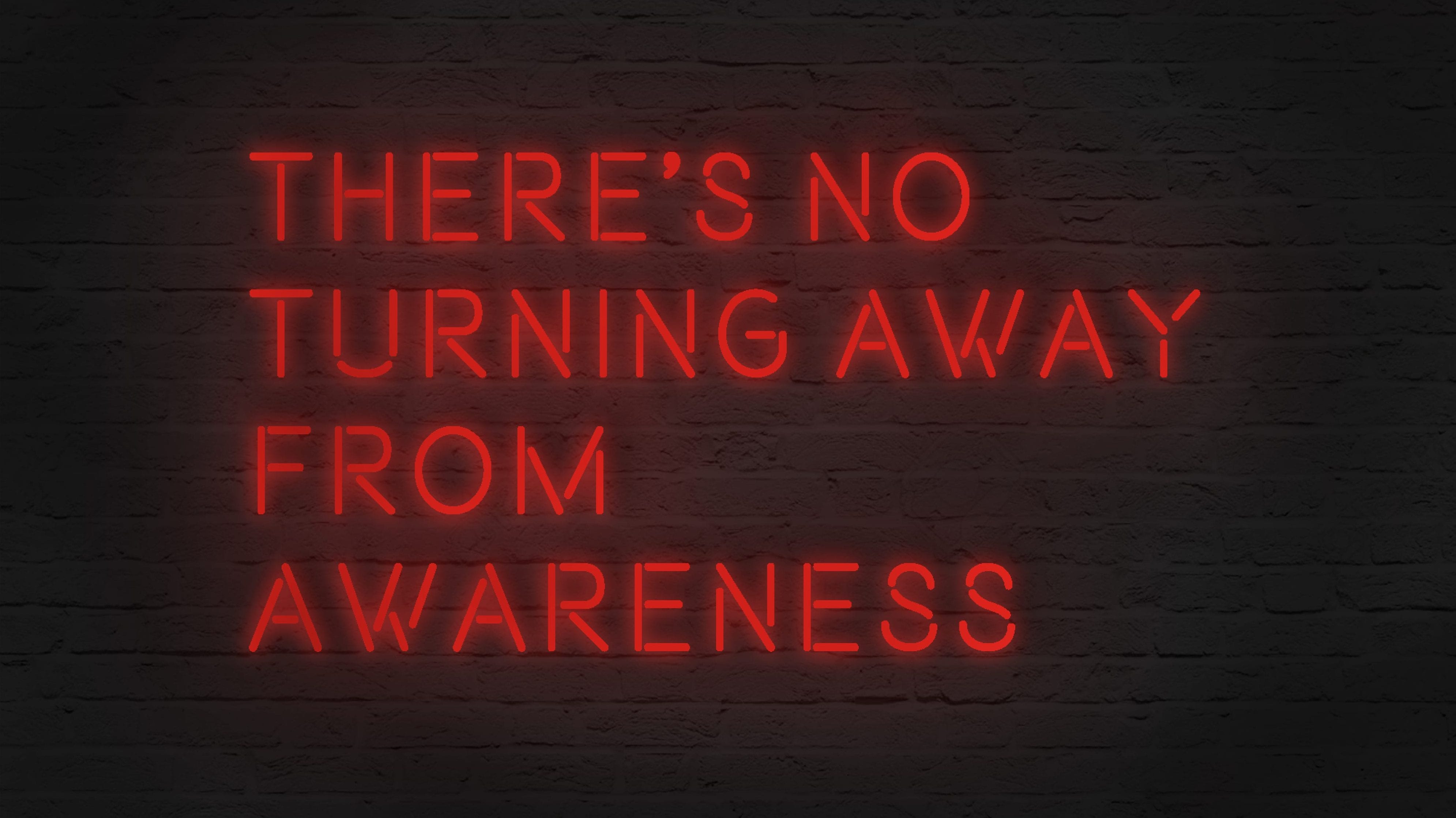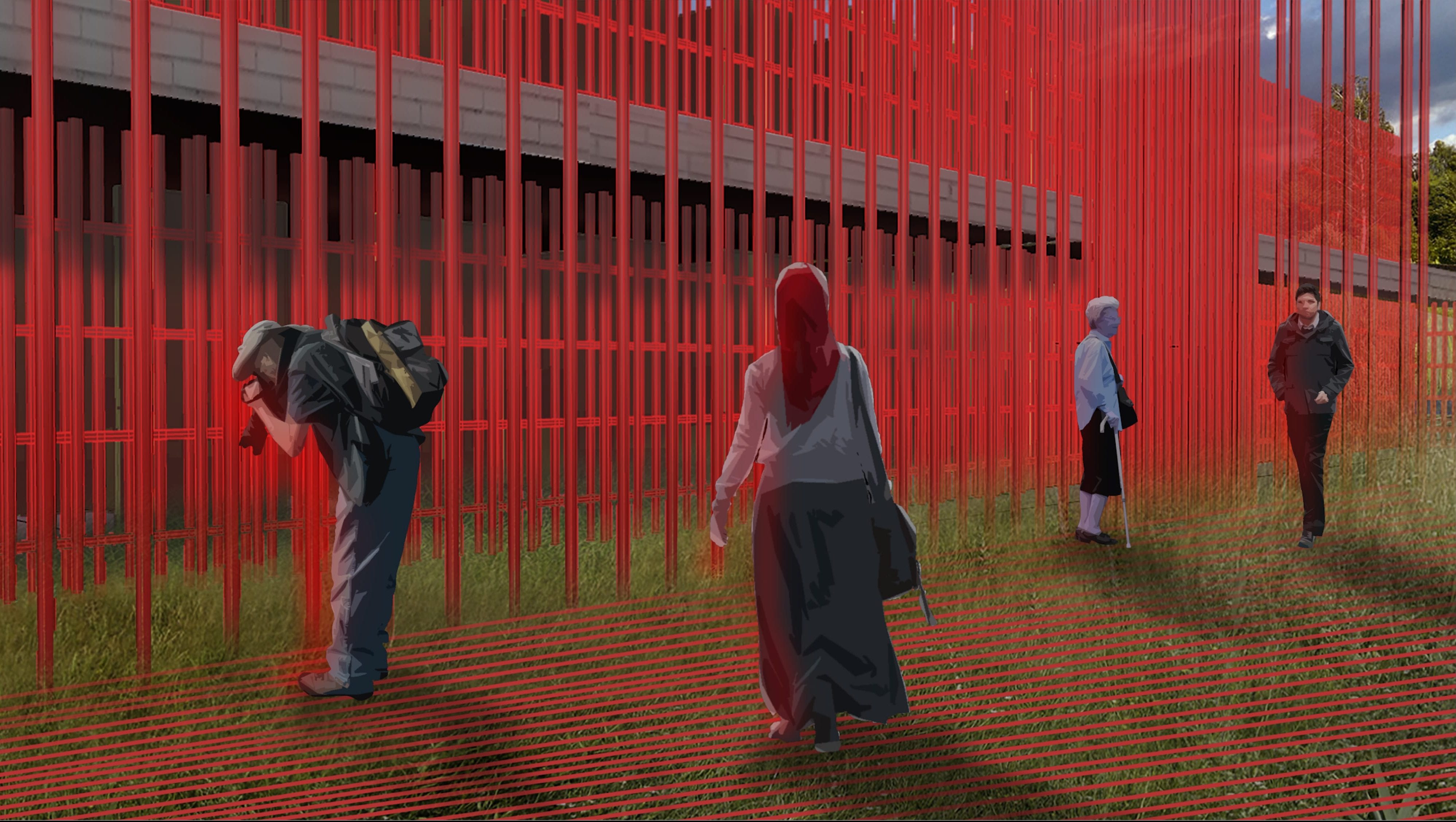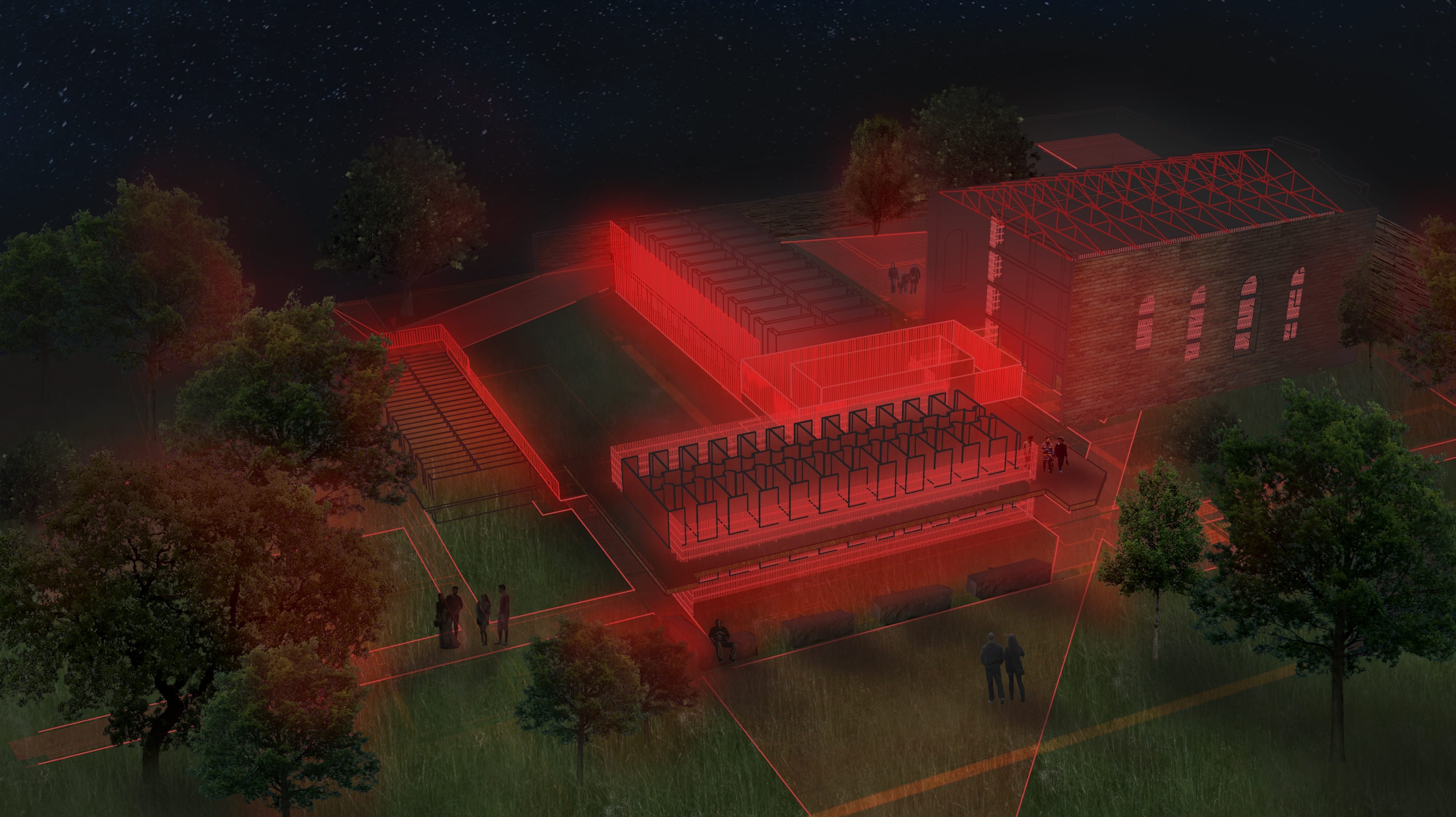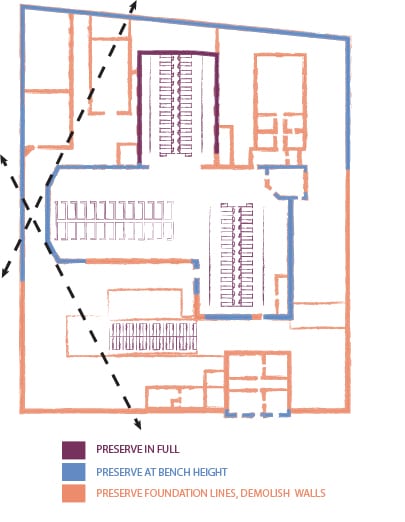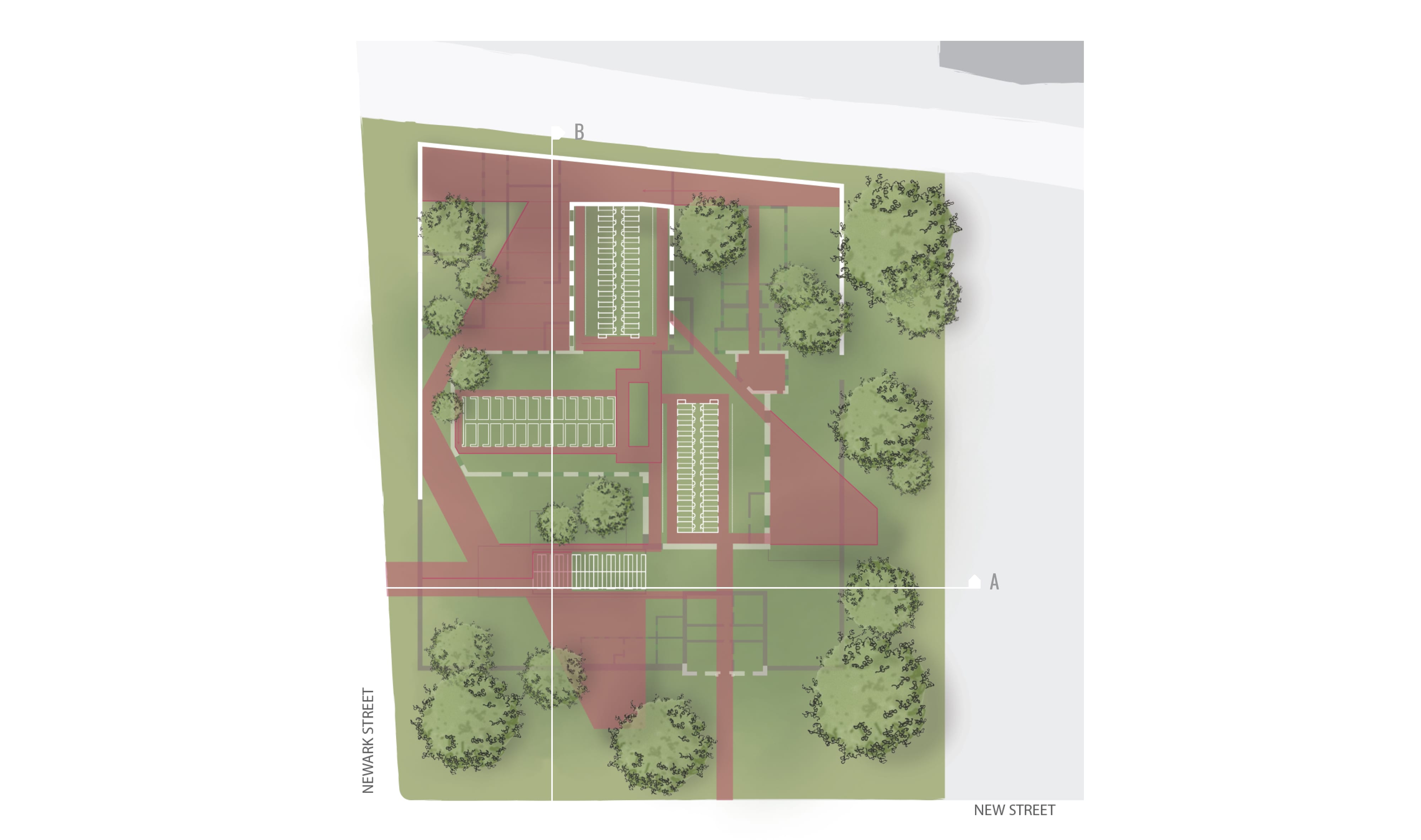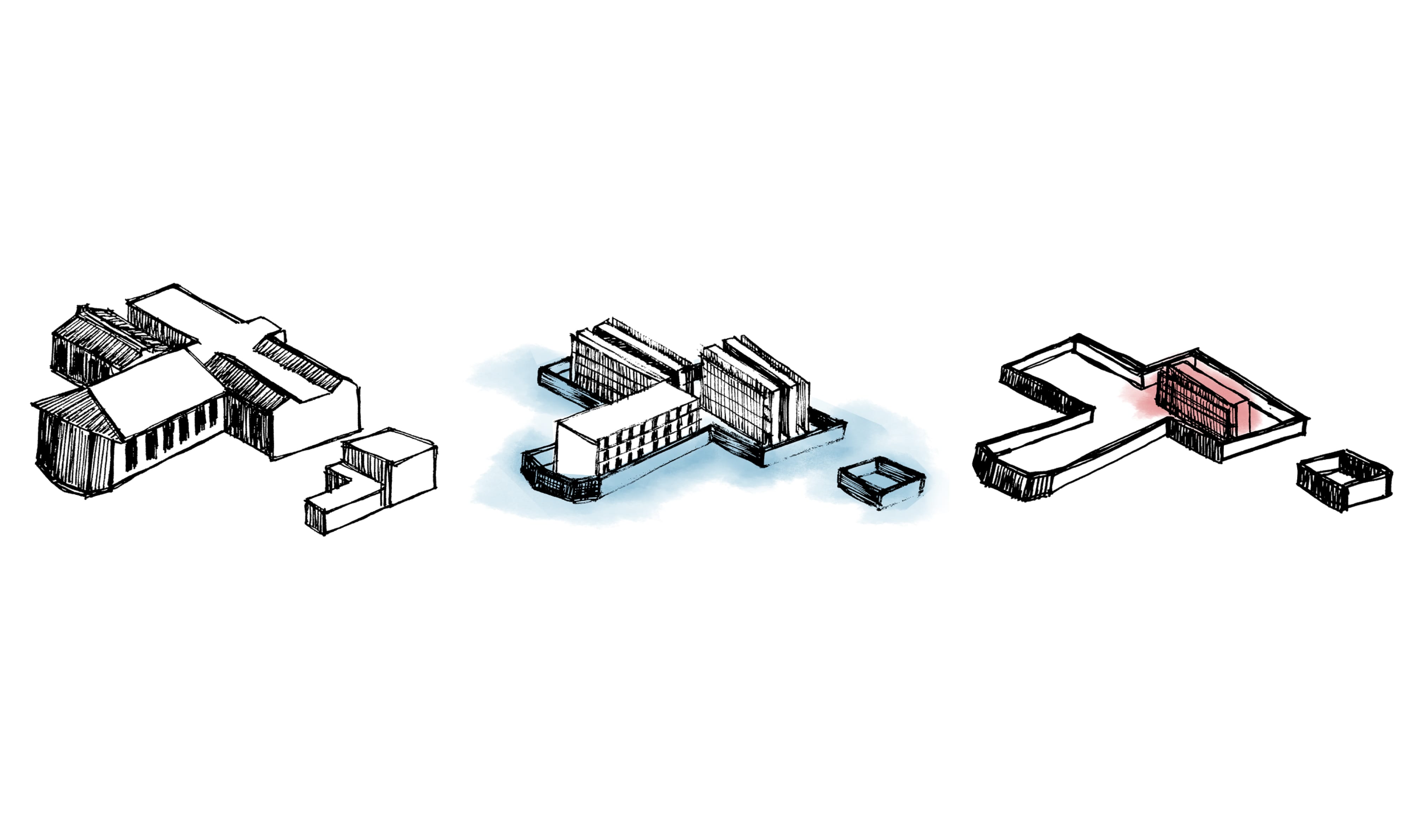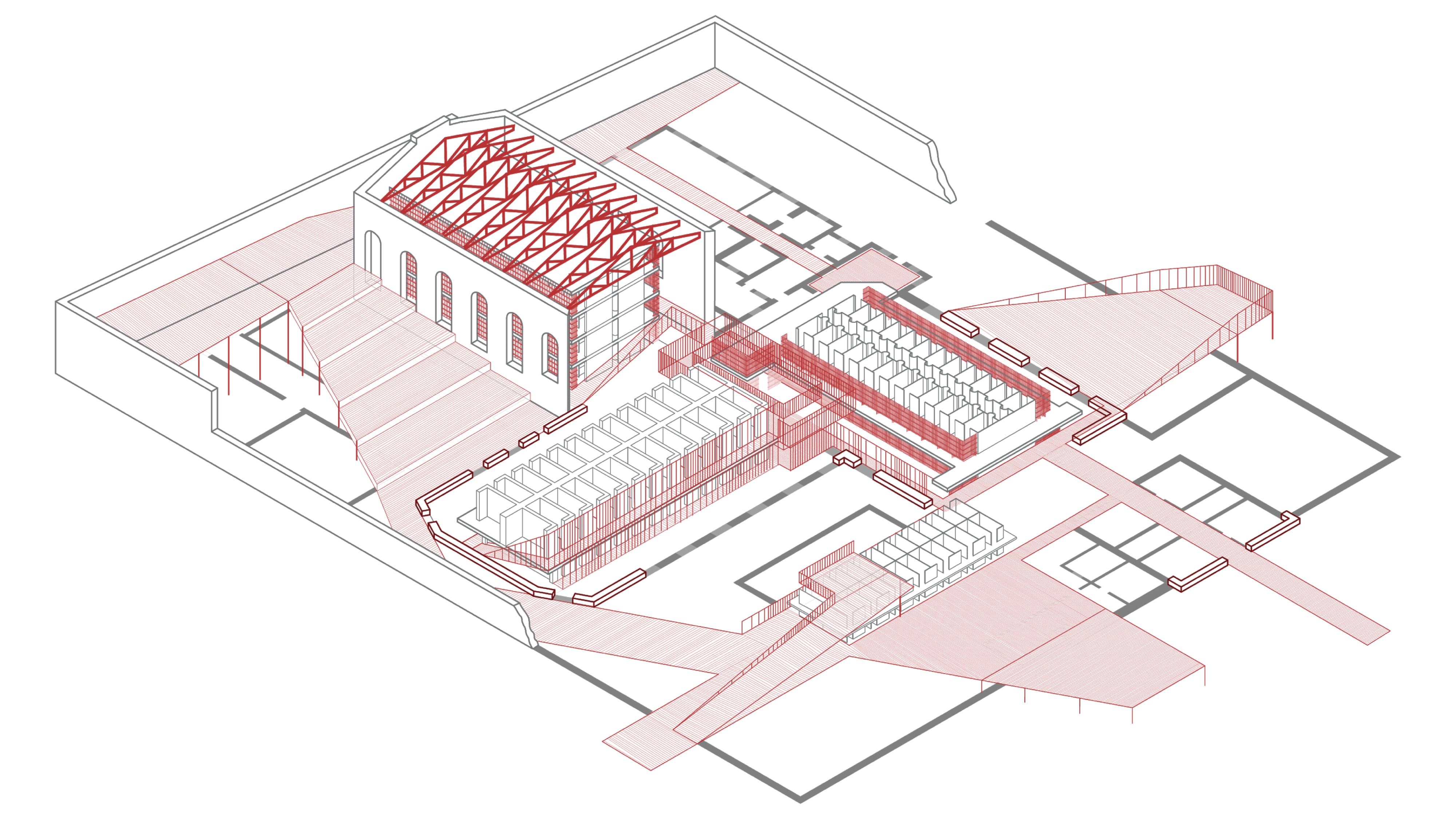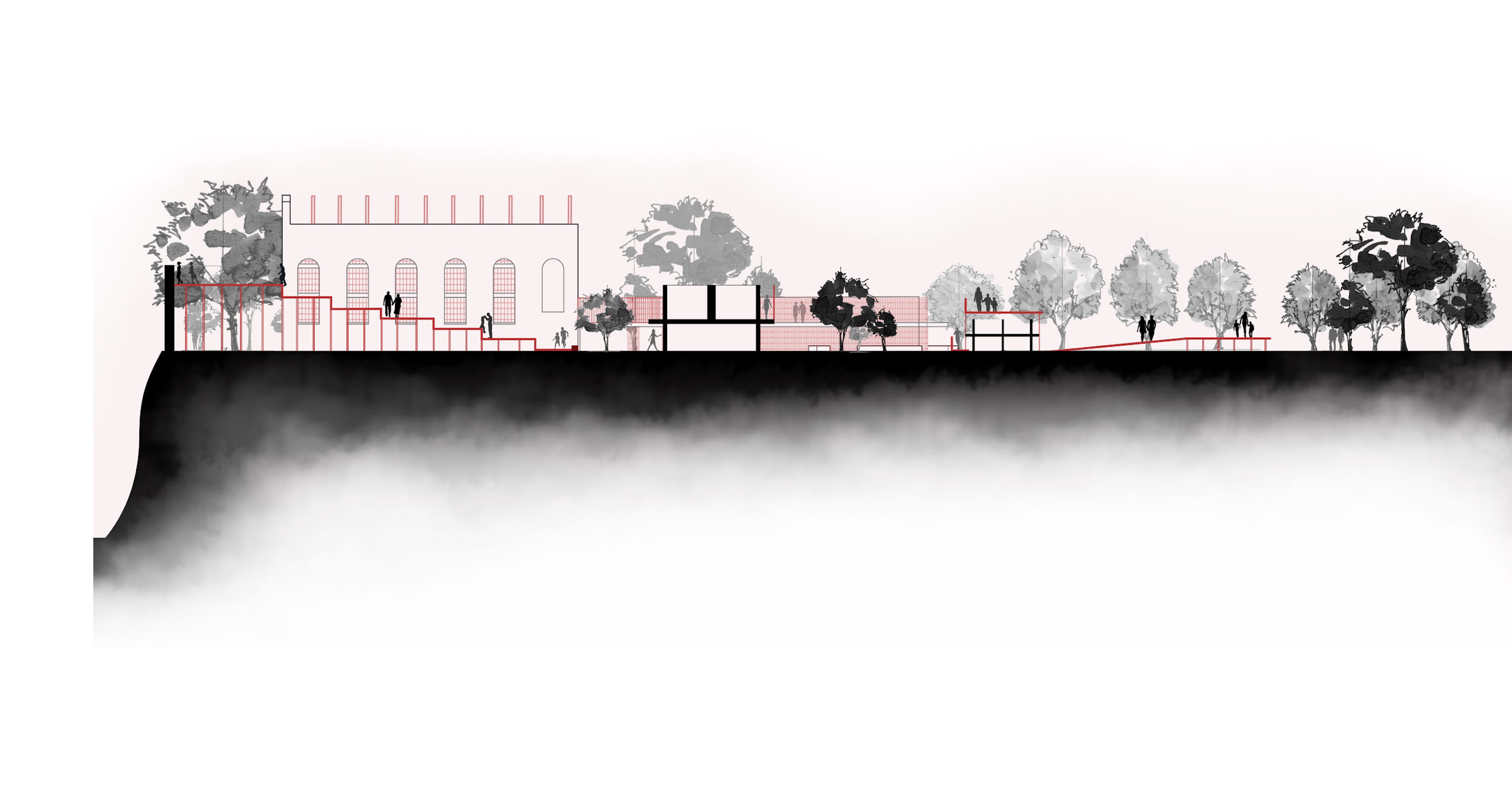My proposal is a park space that integrates the original jail’s physical fabric with a proposed new circulation path that hovers above the overgrown grasses, wildflowers, and shrubs.
Public Park
Preservation can go beyond architectural history and begin to address social histories and changing site conditions as well. This project captures the difficult history of the abandoned jail site and uses it to encourage people to cross social barriers and experience the feelings of confinement in contrast to freedom.
My proposal is a park space that integrates the original jail’s physical fabric with a proposed new circulation path that hovers above the overgrown grasses, wildflowers, and shrubs. The jail cells themselves become the focus of preservation efforts in this project because the cells could become a means by which people could have the same experience as the prisoners, even if only for a few minutes at a time. The buildings’ walls are preserved at either bench height to encourage gathering and spending time on the site, or as outlines on the ground to show the original John Haviland plan.
A series of light installations highlighting the thresholds of cells and quotes from former prisoners completes the proposed preservation and interpretation scheme for this site.

